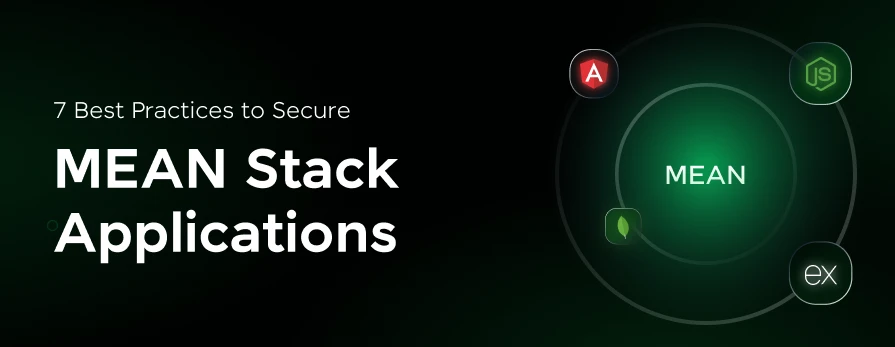
7 Best Practices to Secure MEAN Stack Applications
Sep 16, 2024 6 Min Read 1594 Views
(Last Updated)
If you are starting as a developer, one of the major things that you come across in your learning journey is MEAN stack applications.
They are crucial for your learning curve and it is highly important that you should know how to secure MEAN stack applications as those will help you stand out as a developer.
In this article, learn the best practices to secure MEAN stack applications and outstand everyone else.
So, without further ado, let’s get started!
Table of contents
- What is MEAN Stack?
- Best Practices to Secure MEAN Stack Applications
- Structuring Your MEAN Stack Application Properly
- Asynchronous Programming in MEAN Stack Application
- Optimize Angular for Performance
- Secure MEAN Stack Applications
- Use a Database Schema Design in Your MEAN Stack Application
- Perform Regular Code Reviews in Your MEAN Stack Application
- Use Environment Variables in Your MEAN Stack Application
- Conclusion
- FAQs
- How can JSON Web Tokens (JWT) enhance security in MEAN stack applications?
- What are environment variables and why are they important for security?
- How often should dependencies be updated in MEAN stack applications?
- Why is it important to use HTTPS in MEAN stack applications?
What is MEAN Stack?

Before we move into the main topic of learning how to secure MEAN stack applications, let us see what it is first.
The MEAN stack is a collection of technologies used to develop web applications. MEAN stands for MongoDB, Express.js, Angular, and Node.js.
MongoDB is a database system used to store data.
Express.js is a framework that makes it easier to build web applications with Node.js, which is a platform that allows you to run JavaScript on the server side (outside a web browser).
Angular is a framework for building the front end of the application, which is what users interact with within their web browser.
Together, these technologies provide a full set of tools to create dynamic websites and applications from start to finish, all using JavaScript. You will be learning how to secure MEAN stack applications in the upcoming section.
Learn More: React vs Angular vs Vue: Choosing the Right Framework
Best Practices to Secure MEAN Stack Applications
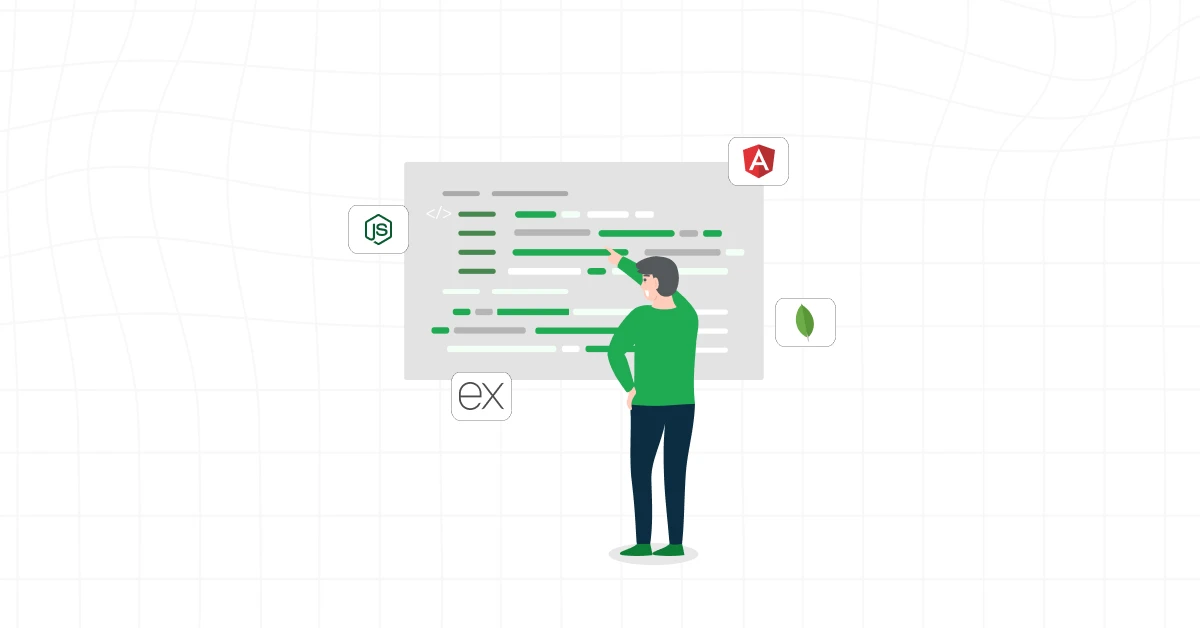
Now that you understand what MEAN stack is, let us move on and focus on the topic of our concern which is to secure MEAN stack applications.
But before moving further, it is important that you know the basics of full-stack development. If not, consider enrolling in a professionally certified online Full-stack Development Course offered by a recognized institution to upskill yourself on the subject.
Let us see some best practices to secure MEAN stack applications:
1. Structuring Your MEAN Stack Application Properly
When building a MEAN stack application, organizing your project’s structure is the first step to secure MEAN stack applications like sorting out your toolbox before you start fixing things.
It makes everything smoother and faster, not just for you but for anyone else who might work on the project later. Let’s break down how you can do this effectively.
Start With a Clean Base
Imagine you’re constructing a building. You wouldn’t start without a blueprint, right? The same goes for your application. Here’s a simple way to think about structuring:
- Server-side code: This is where your Node.js and Express.js files live. They handle requests from your users, talk to your database, and decide what data to send back.
- Client-side code: Here, you’ll place your Angular files. This part of your application deals with everything the user interacts with directly in their browser, like forms and buttons.
Create a Modular Layout
Modularity is your friend, especially in larger applications. By breaking down your application into smaller, manageable parts (modules), you make it easier to maintain and scale. Here’s how you can do it:
- Feature-based structuring: Organize your directories by feature. For example, if you have a section for user authentication, keep all related Angular components, services, Node controllers, and models in one folder named
auth. - Core and shared modules: Some components or services are used across the entire app. Put these in a
coreorshareddirectory. For example, a navigation bar component or a user session service.
By taking the time to structure your MEAN stack application properly from the start, you set yourself up for success and that is why, this is first in the list of best practices to secure MEAN stack applications, making your development process smoother and more efficient.
Learn More: A Comprehensive Guide to Deploying Your MEAN Stack Application
2. Asynchronous Programming in MEAN Stack Application
In the world of web development, particularly when using Node.js in your MEAN stack, embracing asynchronous programming isn’t just a best practice—it’s a necessity to secure MEAN stack applications.
Understanding Asynchronous Programming
Think of asynchronous programming like a busy restaurant kitchen. Instead of having one chef who cooks one dish at a time (synchronous), you have multiple chefs who can cook several dishes at the same time (asynchronous). This means dishes get prepared faster and customers are happier.
In the context of your MEAN stack application:
- Synchronous operations block other operations from running until they are complete. If your application is waiting for a file to download or a database query to run, it can’t do anything else in the meantime.
- Asynchronous operations, on the other hand, allow your application to handle other tasks while waiting for other operations to complete. This is especially important in web applications, where you might be handling many requests from users simultaneously.
By embracing asynchronous programming in your MEAN stack development, you’re not just coding, you’re preparing your application to handle real-world usage efficiently along with a way to secure MEAN stack applications.
Explore: Interaction Between Frontend and Backend: Important Process That You Should Know
3. Optimize Angular for Performance
When you’re building web applications with Angular as part of your MEAN stack, ensuring that your app runs smoothly and quickly is crucial.
No one likes to wait for pages to load or for interactions to happen, right? Here are some straightforward ways you can boost your Angular application’s performance as well as its security.
Use OnPush Change Detection Strategy
Angular’s default method of checking for changes can be a bit heavy-handed, especially if your app grows large and complex. It checks your app more frequently than is often necessary, which can slow things down. You can optimize this using the ChangeDetectionStrategy.OnPush.
- What it does: This strategy tells Angular to check for changes only when certain events happen, such as receiving new input data or when you manually tell it to. It’s like telling a guard only to check for intruders if the alarm goes off, rather than patrolling non-stop.
Implement Lazy Loading
Lazy loading is another fantastic technique to speed things up. Instead of loading your entire application upfront, you load only the parts that the user needs right away. Other parts are loaded as needed.
- How to do it: Angular makes lazy loading fairly straightforward through its routing system. You set up routes to load only when they are accessed. This reduces the initial load time significantly.
By implementing these techniques, you’re not just speeding up your application, but you’re also improving to secure MEAN stack applications.
Find Out Top 10 Full-Stack Developer Frameworks in 2024
4. Secure MEAN Stack Applications
Security is a critical aspect of building any web application. To secure MEAN stack applications, ensuring that it’s safe from attackers, not only protects your data but also builds trust with your users.
Let’s walk through some key practices to secure MEAN stack applications.
Use Helmet with an Express
When you’re using Express.js as your server-side framework, one of the simplest yet effective things you can do to improve security is to use a package called Helmet. Helmet helps secure your apps by setting various HTTP headers.
- What does it do? Helmet can prevent some well-known web vulnerabilities by setting HTTP headers appropriately. For example, it sets headers to prevent attackers from injecting malicious scripts into your pages (XSS attacks) or from clicking links on behalf of your users (CSRF attacks).
Implement Robust Authentication and Authorization
Ensuring that only legitimate users can access your application is crucial. For this, you need robust authentication (verifying who a user is) and authorization (determining what a user is allowed to do).
- JWT (JSON Web Tokens): This is a popular method for handling authentication in MEAN stack applications. JWTs are tokens that can store user information securely and are sent from the client to the server with each request, allowing the server to verify the user’s identity.
Validate User Inputs
Never trust data coming from users. Always validate and sanitize inputs to protect your application from malicious data that can lead to SQL injections and other attacks.
Regularly Update Dependencies
Outdated libraries or frameworks can contain security vulnerabilities that attackers exploit. Make sure you keep all your project dependencies updated to their latest versions to take advantage of security patches and improvements.
By implementing these tips to secure MEAN stack applications, you’re not just protecting your application, but also safeguarding your users’ information against potential threats.
Remember, it is not a one-time setup to secure MEAN stack applications but an ongoing process that requires vigilance and regular updates.
5. Use a Database Schema Design in Your MEAN Stack Application
When you’re working with MongoDB in your MEAN stack application, it might be tempting to just throw data into the database without much thought about its structure. After all, MongoDB is a NoSQL database that allows flexible schemas.
That is why, it is important to know to secure MEAN stack applications in such cases.
Why Use a Database Schema?
Think of a database schema as a blueprint for your data. It defines the structure of the data you expect to store and how different pieces of data relate to each other to secure MEAN stack applications. Here’s why this matters:
- Consistency: Even in NoSQL databases like MongoDB, keeping your data consistent helps prevent bugs and makes your application easier to understand and maintain.
- Validation: A schema allows you to enforce rules about what data should look like before it is stored. This prevents bad data from causing unforeseen problems in your app.
- Performance: Proper indexing, which can be part of schema design, improves query performance. This means faster data retrieval, which translates to faster response times for your users.
By using a database schema design in your MongoDB setup, you help ensure that your application runs smoothly and your data stays clean and organized which allows us to secure MEAN stack applications effectively.
Explore More: MongoDB vs. MySQL: Which Database Should You Learn?
6. Perform Regular Code Reviews in Your MEAN Stack Application
Performing regular code reviews is like having a buddy double-check your work to ensure everything looks good before it’s finalized. This is a great practice to secure MEAN stack applications.
This process not only helps catch mistakes but also fosters learning and collaboration among team members.
How to Conduct Effective Code Reviews
- Use a Pull Request (PR) Workflow: Most version control systems, like Git, support pull requests. PRs are a way to notify team members that a set of changes is ready to be reviewed before it is merged into the main codebase. This makes it easy to discuss specific changes, ask questions, and make suggestions.
- Keep Reviews Focused and Small: It’s easier and more effective to review small chunks of code than large ones. Aim for quick, frequent reviews of small changes. This reduces the cognitive load on the reviewers and increases the likelihood of catching issues.
- Automate Where Possible: Use tools to automate parts of the review process. Linters and automated tests can catch many common issues, like syntax errors or style inconsistencies before human reviewers ever look at the code.
- Provide Constructive Feedback: When reviewing code, focus on providing constructive, specific, and kind feedback. Instead of just pointing out what’s wrong, suggest improvements and explain why they might be necessary. This educational approach helps improve the code and the coder.
- Regularly Reflect on the Process: Periodically, review your review process. Discuss with your team what’s working and what isn’t, and make adjustments as necessary. This could involve changing how you structure PRs, adjusting the tools you use, or revising your coding standards.
By making code reviews a regular part of your development process, you not only improve the quality of your software but also cultivate a habit that could secure MEAN stack applications in a better and proper way.
7. Use Environment Variables in Your MEAN Stack Application
When building your MEAN stack application, using environment variables is like having a safe for your sensitive information and a control panel for your app’s configuration.
These variables allow you to keep key details like database passwords or API keys out of your source code and adjust your application’s behavior without needing to rewrite or redeploy your code.
Let’s explore why environment variables are essential to secure MEAN stack Applications.
Why Use Environment Variables?
- Security: Keeping sensitive data out of your source code helps prevent security breaches. If your code ever gets exposed, your sensitive data like passwords remain safe.
- Flexibility: You can change settings (like switching databases) without altering your code, just by changing the values of the environment variables.
- Consistency: They help keep your development, testing, and production environments consistent. You can use the same code base across all environments while the variables manage any differences.
Common Uses of Environment Variables
- Database Configurations: Store database connection details such as usernames, passwords, and hostnames.
- API Keys: Keep third-party API keys secure.
- Application Ports and Modes: Set which port your server should listen on and whether your application is in development, testing, or production mode.
By using environment variables in your MEAN stack application, you effectively manage sensitive data providing a haven to secure MEAN stack applications.
This practice is crucial for maintaining a healthy codebase and to secure MEAN stack applications from potential security threats.
If you want to learn more about MEAN Stack Application in full-stack development, then consider enrolling in GUVI’s Certified Full Stack Development Career Program which not only gives you theoretical knowledge but also practical knowledge with the help of real-world projects.
Also Read: Full Stack Developer: Discover the Fastest Route to Becoming One.
Conclusion
In conclusion, the process of securing MEAN stack applications involves a comprehensive approach that involves several best practices.
Utilizing Helmet with Express helps set secure HTTP headers, while robust authentication and authorization mechanisms, such as JWTs, safeguard access. Regularly updating dependencies ensures protection against vulnerabilities, and implementing environment variables keeps sensitive data out of codebases.
By carefully applying these strategies, you can significantly increase the security of your MEAN stack applications.
Also Read: MEAN vs MERN: Career Growth & Salary
FAQs
1. How can JSON Web Tokens (JWT) enhance security in MEAN stack applications?
JWTs provide a secure way to transmit information between parties as JSON objects, allowing you to verify and trust the data without needing a session state.
2. What are environment variables and why are they important for security?
Environment variables store configuration settings outside of the code, such as API keys and database passwords, enhancing security by keeping sensitive data out of the source code.
3. How often should dependencies be updated in MEAN stack applications?
Dependencies should be reviewed and updated regularly, ideally through automated tools, to patch vulnerabilities and keep the software secure.
4. Why is it important to use HTTPS in MEAN stack applications?
HTTPS encrypts the data sent between the client and server, protecting it from interception and tampering during transmission.

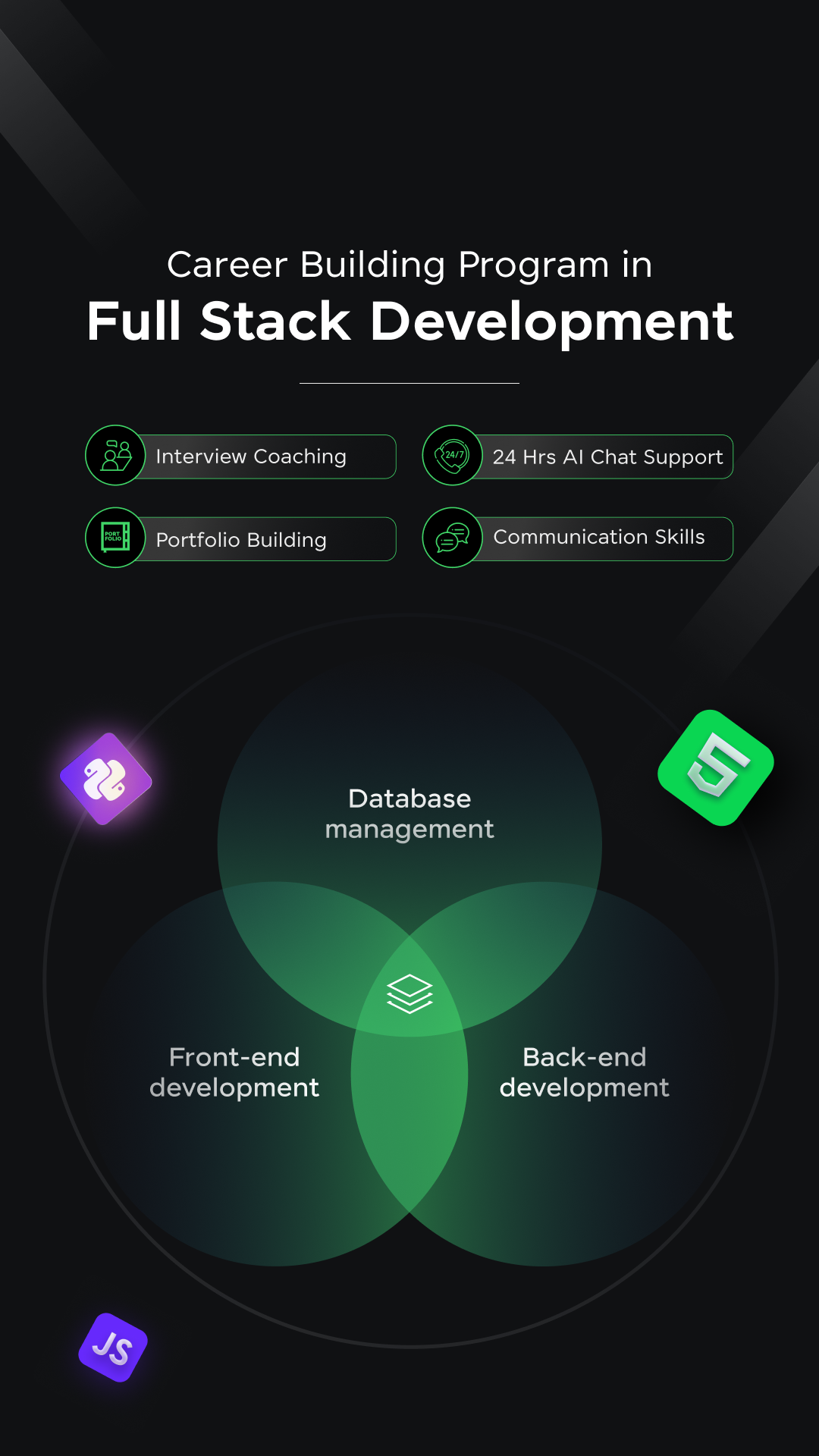



















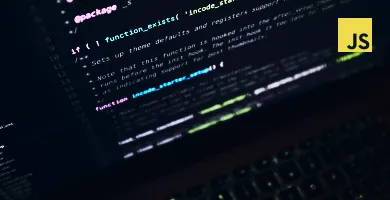
![10 Unique VueJS Project Ideas [With Source Code] 4 VueJS Project Ideas](https://www.guvi.in/blog/wp-content/uploads/2024/11/VueJS-Project-Ideas.webp)




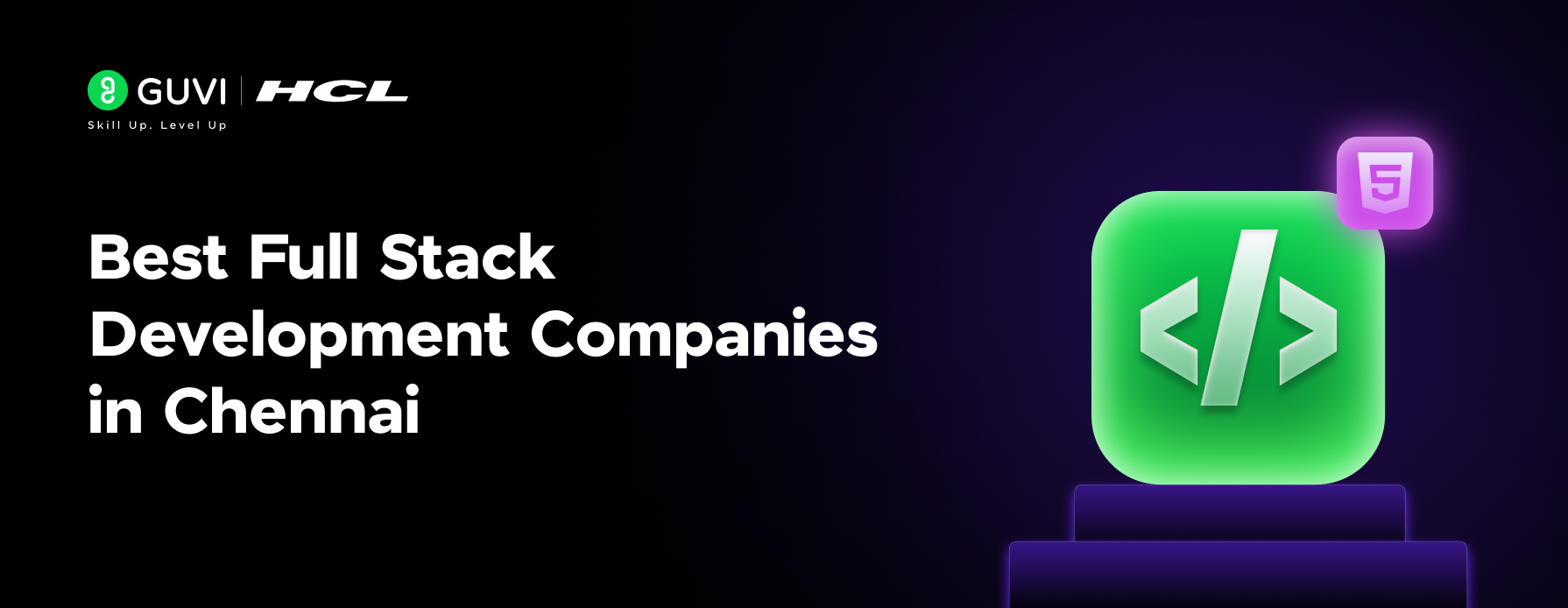


![12 Exciting Software Development Project Ideas [With Source Code] 12 Software Development Project Ideas](https://www.guvi.in/blog/wp-content/uploads/2024/10/Software_Development_Project_Ideas.png)
Did you enjoy this article?